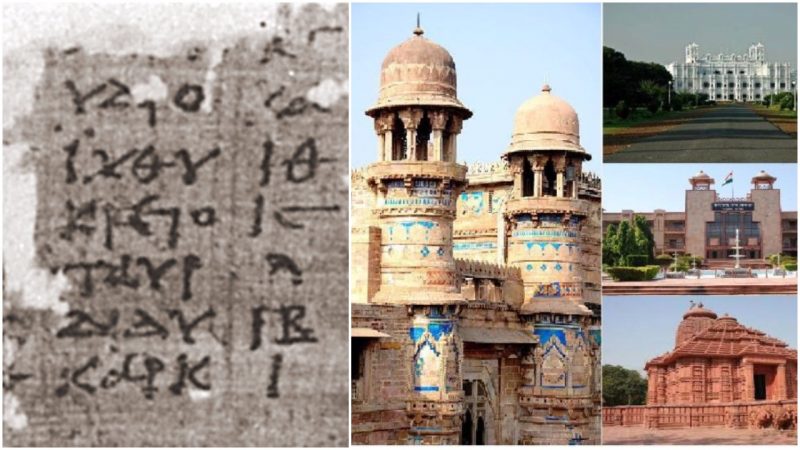In 1881, a farmer in Pakistan found a book made of birch bark that turned out to be the earliest recorded text that used zero as a number.
The Bakhshali manuscript, as it is now called, was turned over to Rudolf Hoernle, a scholar of Indian studies in 1902. Hoernle then presented it to the Bodleian Library of Oxford University, and it has been the subject of debate for over 100 years.
The 70-page book was written on the material that was most common before papyrus and paper came about, which probably kept it from deteriorating. It was written in Sanskrit, the ancient language of Hinduism that originated in India and Southeast Asia.

Originally it was thought by historians to be from sometime between the 8th and the 12th centuries, but recent carbon-dating shows different parts of the manuscript came from different time periods. The earliest sections came from about the 3rd century, 500 years before what was previously believed.

The manuscript shows a zero as a small dot, which eventually evolved into the 0 symbol that we use today. According to researcher Marcus du Sautoy in National Geographic, “This zero in India is the seed from which the concept of zero as a number in its own right, represented by the same dot or circle, would emerge some centuries later, something many regard as one of the of the great moments in the history of mathematics.” Indeed, the establishment of zero as an actual number and quantity of none paved the way for calculus and physics as we know them today.

In Scientific American, Robert Kaplan, Harvard math professor and author of The Nothing That Is: A Natural History of Zero, says that zeros used as placeholders have been around since the Sumerians of Mesopotamia 5,000 years ago. The concept theoretically spread to the subcontinent of India and northward into China by traders that followed the Silk Road, an ancient trading route established sometime between 500 and 330 B.C.
The earliest known use of 0 as a symbol was from an ancient Indian temple in Gwalior, about 200 miles south of Delhi, constructed in 876 A.D. Until the discovery and dating of the Bakhshali manuscript, the first known writings using zero as a number were from Brahmagupta, an ancient astronomer and mathematician. The Brahmasphutasiddhanta, written about 628 A.D., speaks of the incorrect act of dividing by zero.

Author and translator Peter Gobets, a founding member of ZerOrigIndia Foundation, disputes the origin of zero as a number used in actual mathematics. The ZerOrigIndia Foundation acknowledges that Brahmagupta was the first to claim zero as a tangible number but is still skeptical about the idea that the concept of zero used in mathematical equations came from the Bakhshali manuscript.
ZerOrigIndia’s objective as shown on their website zerorigindia.org “has set itself the task of having a properly staffed and funded multidisciplinary research team of experts take up the challenge of answering the question as to when and where the zero digit first appeared and if possible, to pinpoint the prevailing cultural conditions under which the individual thrived who made this astounding contribution to progress.”

When the concept of zero as a fully fledged number came to European countries, Italian mathematician Leonardo Pisano Bigollo, better known as Fibonacci, embraced it and began to use it to complete mathematical equations without an abacus. Theological leaders of the time rejected it as a symbol of Satan. According to Nils-Bertil Wallin of YaleGlobal, the Italian government outlawed the use of zero, causing Europeans to use it surreptitiously. By the 1600s, zero had blended into mainstream mathematics, allowing mathematicians such as Sir Isaac Newton and Gottfried Wilhelm Leibniz to develop calculus, the basis of engineering, physics, and computers.
The Bakhshali manuscript is still housed at Oxford University in England.
